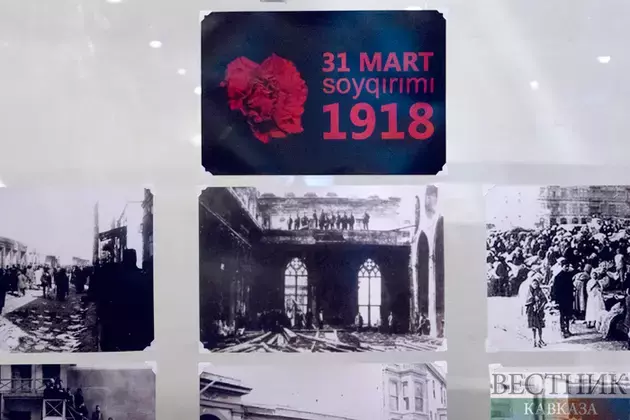Today, Azerbaijan commemorates the victims of the largest massacres in the history of the Azerbaijani people.On March 31, 1918, the genocide of Azerbaijanis began, during which Armenian nationalists and Bolsheviks took the lives of more than 40 thousand residents of Baku, neighbouring cities and villages only because of their nationality. Since 1998, March 31 has become an officially memorable date in the Republic of Azerbaijan — the Day of Genocide of Azerbaijanis.
Reasons for the genocide of Azerbaijanis
After the October Revolution of 1917, a fierce political struggle began in Azerbaijan: the Musavat party sought to create an independent Azerbaijan Democratic Republic, and the Bolsheviks, who controlled Baku, represented by the Baku Council, tried to prevent the loss of such significant territories. At that time, Azerbaijan produced about 90% of the oil on the lands of the former Russian Empire, and the Baku Council had a directive from the Bolshevik leadership to keep Azerbaijani territories under control at any cost.
To defeat Musavat, the Bolsheviks decided to use force and, for this purpose, created a coalition with the Armenian radical nationalist party Dashnaktsutyun, built around Turkophobic and Islamophobic ideas. In fact, Dashnaktsutyun was an extremist and terrorist organization, since it set itself the task of the complete destruction of Azerbaijanis in the region with the subsequent proclamation of an Armenian state in the ethnically cleansed territories.
The aspirations of the Dashnaks, who wanted to create an independent state, contradicted the interests of the Bolsheviks, but at that time they had the same plans for the physical liquidation of the Musavat party, so the Baku Council and Dashnaktsutyun jointly organized and carried out massacres of Azerbaijanis in Baku and other cities.
How many Azerbaijanis died?
The genocide of Azerbaijanis lasted from March 31 to April 3, 1918. During this time, the Dashnaks and Bolsheviks killed:
- 12 thousand people in Baku;
- 8 thousand people in Aresh, Goychay and Shamakhi districts;
- 7.7 thousand people in Zangezur;
- 7 thousand people in Shamakhi;
- 3 thousand people in Nakhchivan and Sharur;
- 2 thousand people in Guba.
The criminals not only killed people, but also robbed and burned populated areas. During the same four days the following villages were destroyed:
- 211 Azerbaijani villages in the Erivan province;
- 150 Azerbaijani villages in Karabakh;
- 122 Azerbaijani villages around Guba;
- 115 Azerbaijani villages in Zangezur;
- 92 Azerbaijani villages in the Kars region;
- 58 Azerbaijani villages around Shamakhi.
The huge number of victims was explained by the radical disparity of power between the Dashnak terrorists and the Azerbaijani population. Apart from the officers of the "Wild Division", there were no military personnel among the Azerbaijanis, since they were not drafted into the Russian Empire's army, while the Armenians served on a general basis. Thus, the Dashnaks had both weapons and professional soldiers with combat experience of the First World War, and they had to be opposed by Musavat volunteers and a few members of the Wild Division.
Consequences of the Azerbaijani genocide
Historians analyzing the events of 1918 in the South Caucasus draw attention to the decisive role of the aggressive nationalism of the Dashnaks in the fact that the peoples of the region were unable to maintain their independence.
Baku and Tiflis called for the unification of Azerbaijanis, Georgians and Armenians into a common federal state to jointly defend sovereignty, but Yerevan rejected these calls.
Thus, the genocide of Azerbaijanis by Armenian nationalists on March 31 – April 3, 1918 determined the further history of the South Caucasus.






